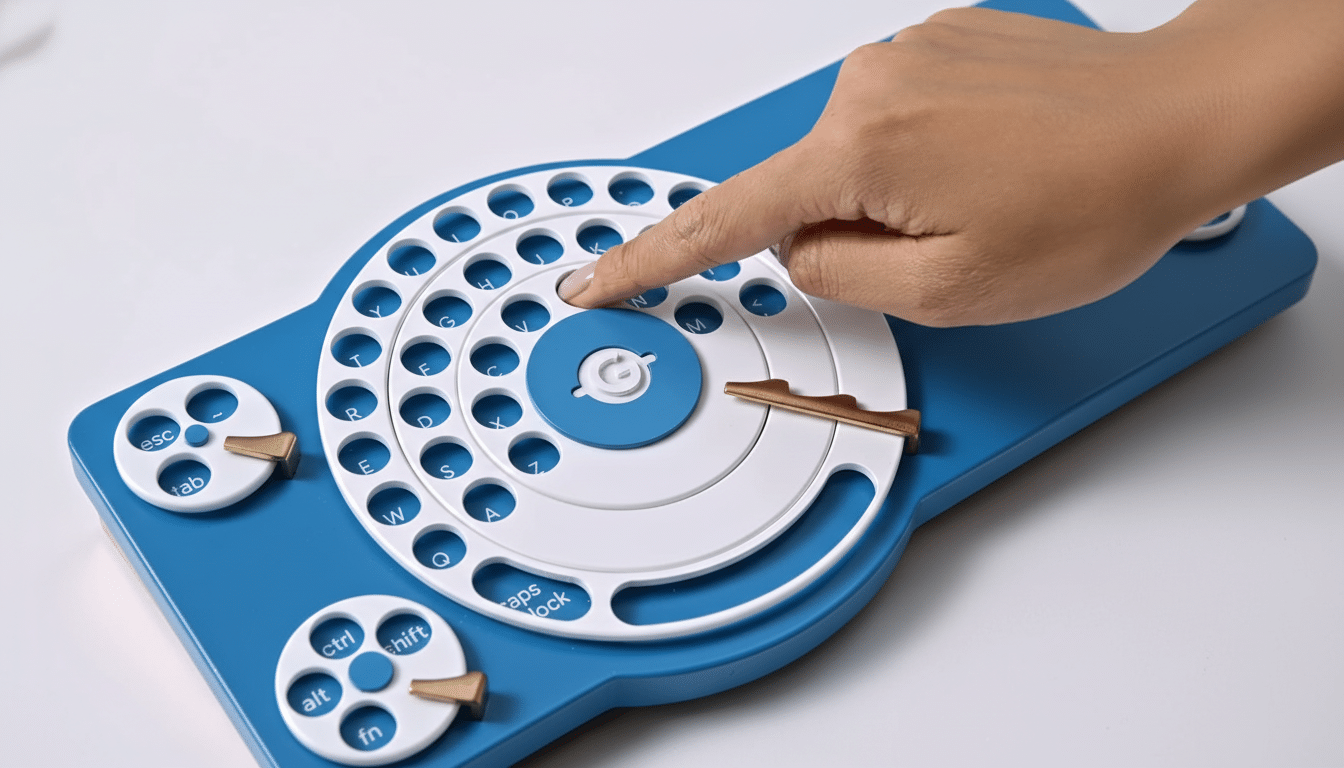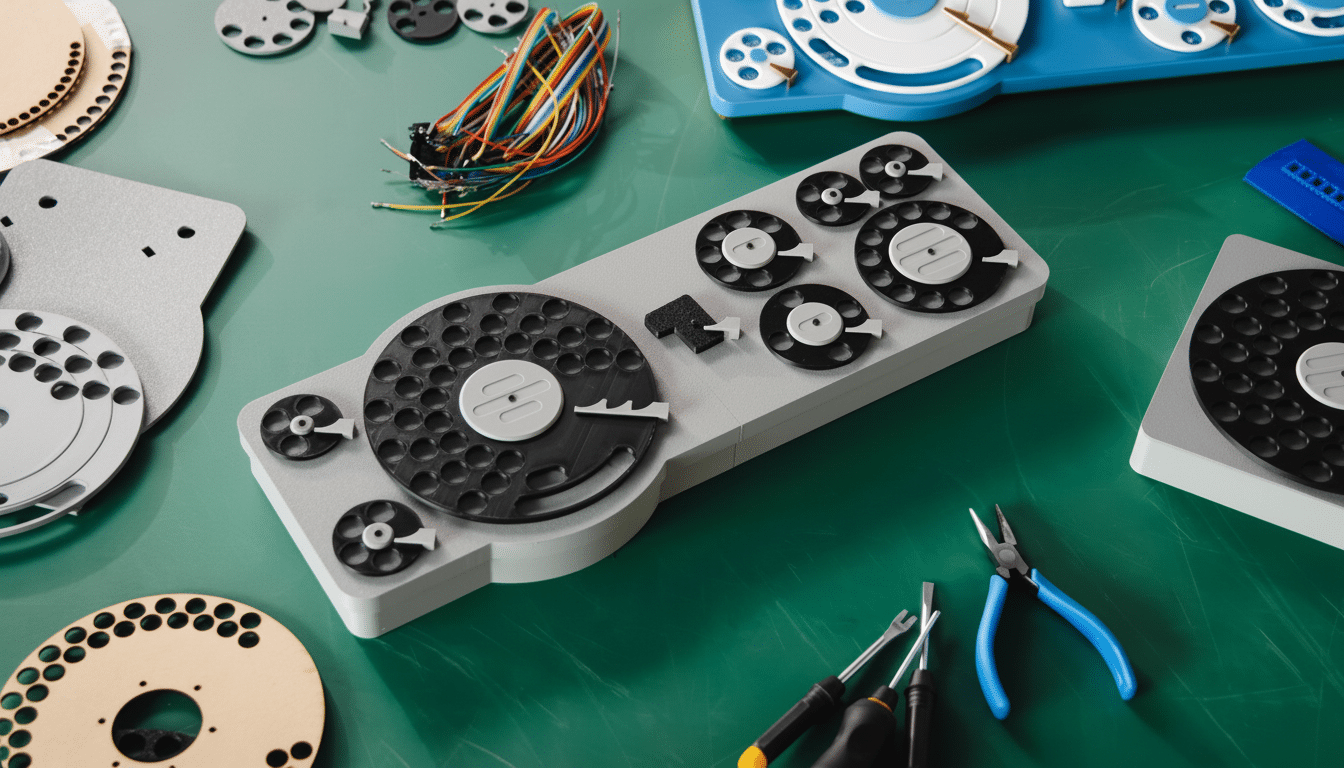Google Japan has just cranked up one of its quirkier experiments to date, announcing a Gboard rotary keyboard which remakes text input with the tactile nostalgia DNA of a landline dial. An equal-parts retro homage and maker challenge, the project resurrects the slow motion of rotary dialing – applied here to letters and punctuation (and even navigation keys!) – that keyboard makers have shown can be both playful and surprisingly thoughtful.
The concept behind the rotary dial input device
Instead of rows of keys, the prototype has circular dials that you spin to select characters. One dial can be responsible for letters of the alphabet, while other dials handle modifiers (like Shift) or punctuation, arrow keys and Enter. Even the return key is a dial, maintaining thought from concept to completion. It’s a gloriously consistent little move, making every command it executes feel like an ‘aha’, twist-and-release motion made good.

Google has published design files and build instructions so fans can make one themselves using 3D-printing and off-the-shelf components. There’s a simpler single dial for letters, and a highly tricked-out nine-dial version for those who really want the whole experience. The company does not sell it as something for productivity, but the anatomy is there — this has been fleshed out and rendered rather than kept as just that.
A Playful Tradition In Keyboard Experiments
Google’s Japan team has had a history of out-there input ideas, which push the boundaries of what “normal” should be. Last year brought an endlessly looping Möbius strip of a keyboard, a mind-bending design that used geometry to express something about continuous input. These projects are not just gimmicks for their own sake; they’re topics of conversation about how we talk to machines and how design constraints can be flipped around.
This sort of exploratory work fits within a wider context in the HCI research community, where there is an ongoing effort to explore and evaluate alternative paradigms such as radial menus, pie selection, rotary controls and so on, in order to subvert the hegemony of QWERTY. The ACM CHI community has previously reported that radial selection can decrease the distance traveled by the cursor, and that muscle memory comes into play if peak velocity isn’t targeted.
The point isn’t speed, it’s intentional interaction
It comes as no surprise that a rotary keyboard isn’t going to turn heads like a touchscreen or mechanical board. Research from universities like Aalto and Cambridge have pegged average smartphone typing in the high-30s of words per minute, while proficient typists on full keyboards can double or triple that. By design, rotary interaction is more intentional. Yet slowness can be a feature: It foregrounds intent, introduces haptic rhythm and encourages a playful mindfulness that normal tapping does not.
On the ergonomics side, the circular motion plays on a power that makes watch crowns, jog wheels and camera dials so pleasurable. It’s a reminder that physical affordances — texture, resistance, the return of a dial (dials are so hot right now) — can make interfaces feel alive. It won’t replace QWERTY, but it could lead to new hybrids like rotary-assisted shortcuts or radial symbol pickers in mainstream keyboards.

Open Source With A Side Of Maker Culture
Through open-sourcing the design on GitHub, the team throws down an invitation to all out there in the community who want to remix it.
Expect mechanical keyboard fetishists, accessibility tinkerers and DIY communities such as Hackaday readers to toy with custom dial ratios, haptic feedback or firmware that maps spins to macros. Projects like this one tend to rely on off-the-shelf microcontrollers and rotary encoders, which keeps the part count down and costs reasonable.
That openness matters. Some of the best input ideas — trackballs, split boards, chorded keys — got traction via grassroots experimentation before industry followed. Even if the rotary keyboard remains niche, its parts and code stand to seed new designs, especially for users who rely on distinctive motor patterns or alternative interfaces.
Why this matters for Gboard and beyond, across devices
Gboard is popular for its predictive typing, glide input, and multilingual support. But the rotary project also draws attention to another pillar: studying how form factors influence behavior. As devices get bigger — phones, foldables, watches, cars — inputs that delight one surface will not always work for another. A dial-centric approach could work for wearables or infotainment systems, where accuracy takes precedence over speed.
There’s also a cultural element. Funny-bone prototypes help keep big tech human. They ignite curiosity, promote learning and reaffirm the maker ethos that drove early computing. When you have a team that will make a physical joke you can actually build yourself, it blurs the line between satire and engineering in the best possible way — reminding us all that tools are also toys and innovation often begins with a smile.
The bottom line: a playful rethink of typing
Google Japan’s Gboard rotary keyboard is not for typing faster. It is about rethinking what “typing” can be, celebrating tactile input and inviting the community to join in. Whether you print the one-dial version or take it to an extreme with nine dials, the project is a thoughtful prod to spin outside the box — and a refreshing throwback to eccentric experiments that make tech fun.

